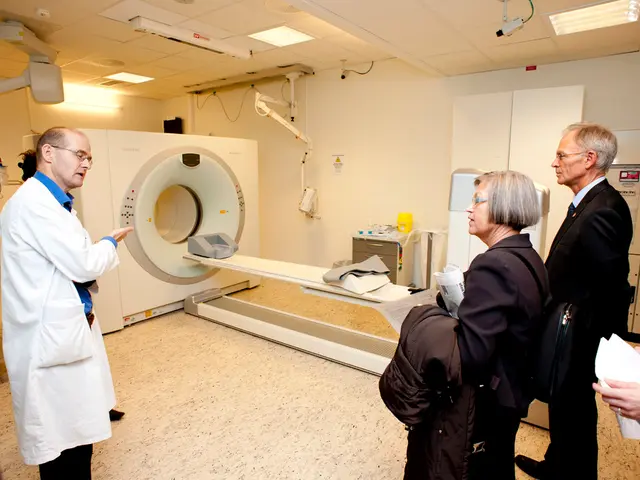Child Face Video Analysis forIdentifying Pain in Kids through Collaborative Machine Learning Approach
In a recent study, researchers have developed a method that significantly improves the performance of pain recognition systems in children using computer vision and automated Facial Action Unit (AU) codings.
The study aimed to address the challenge of accurately determining pain levels in children, a task that is often difficult for trained professionals and parents. To achieve this, the researchers used computer vision algorithms to automatically detect AUs, as defined by the Facial Action Coding System (FACS), to determine pain levels.
The researchers found that the transfer learning method can help improve the accuracy of pain recognition systems that rely on automated AU codings. This method enabled more robust pain recognition performance when only automatically coded AUs are available for the test data. In fact, the transfer learning method resulted in an improvement of the Area under the ROC Curve (AUC) on independent data from the target data domain from 0.69 to 0.72.
To improve classification performance, the transfer learning method was applied to map automated AU codings to a subspace of manual AU codings. This approach helped to address the issue of diminished performance of pain/no-pain classifiers based on automated AU codings across different environmental domains.
The study also found that classifiers based on manually coded AUs demonstrated reduced environmentally-based variability in performance compared to those based on automatically coded AUs. This highlights the importance of accurate AU detection, especially in diverse child populations and environmental settings.
To mitigate biases in AU detection, the researchers suggest either domain adaptation or synthetic data augmentation. Synthetic datasets such as SynPain have been developed to create pain and non-pain expressions exhibiting clinically valid AU patterns. Using such synthetic datasets can help models generalize better across domains where pain expressions are underrepresented, thus supporting transfer learning where annotated real data is scarce or biased.
The study did not discuss any specific challenges or limitations of the transfer learning method beyond pain recognition. However, it provides a promising foundation for future research in this area.
In conclusion, the implementation of these strategies can help create pain recognition systems that maintain high performance across diverse environmental domains and pediatric populations, capitalizing on transfer learning and improved AU codings reliability. The potential applications of the transfer learning method beyond pain recognition remain to be explored.
References:
- SynPain: A Large-scale Synthetic Dataset for Pain Expression Recognition
- MedBridge: A Lightweight Multimodal Adaptation Framework for Medical Image Diagnosis
- Understanding Deep Learning Requirements for Medical Image Analysis
- AI-Driven Closed-Loop Systems for Medical Diagnostic Tasks
The study, leveraging science and technology, suggested employing synthetic data augmentation from datasets like SynPain for pain expression recognition, aiming to create more accurate and diverse eye tracking methods in health-and-wellness and mental-health contexts. The strategic use of transfer learning in automated AU codings could potentially expand beyond pain recognition, contributing significantly to various medical diagnostic tasks.




